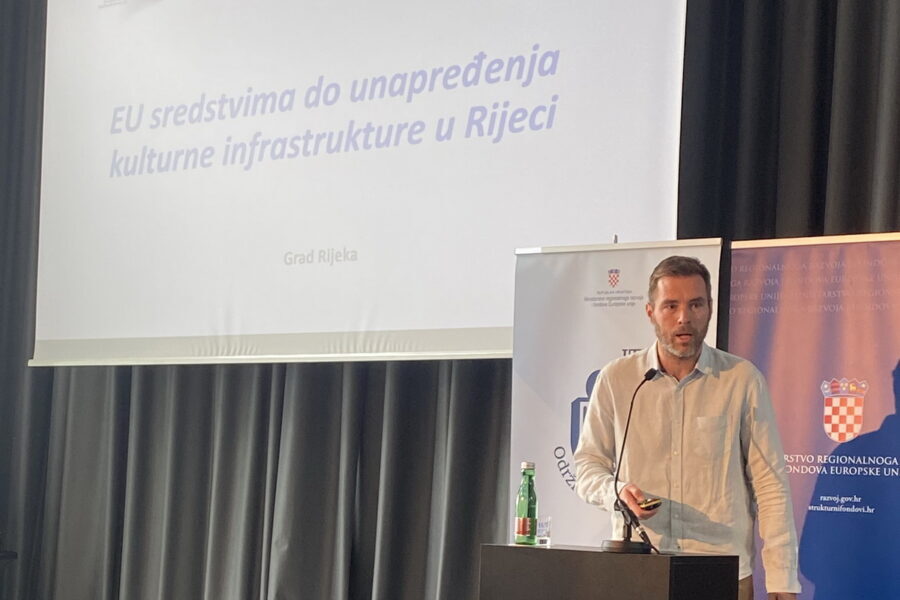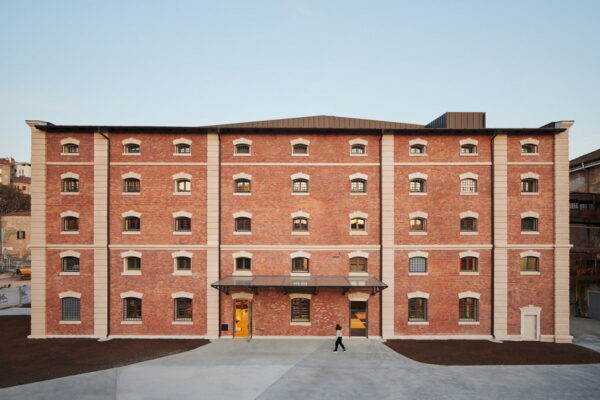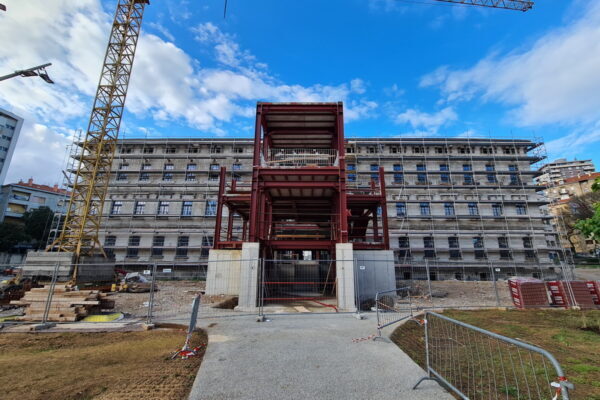
At the conference “ITI cities in the new programming period” held in Zagreb, the City of Rijeka presented its projects aimed at improving cultural infrastructure in Rijeka funded by the EU under the ITI mechanism.
The conference was organised by the Ministry of Regional Development and EU Funds with the aim of presenting the results of implementing the Integrated Territorial Investment Mechanism (ITI mechanism) in the Republic of Croatia and expanding the ITI mechanism to new areas, as well as investment opportunities offered in the new financial period 2021-2027.

CHILDREN’S HOUSE
Integrated Territorial Investments (ITIs) is a mechanism implemented for the first time in the European Union in the financial period 2014-2020, enabling synergies of various European funds and operational programmes and investments of these resources in activities that strengthen the role of cities as drivers of economic development. In 2015 the Rijeka Urban Agglomeration was set up that included the following cities: Rijeka, Kastav, Kraljevica and Opatija and the following municipalities: Čavle, Klana, Kostrena, Lovran, Mošćenička Draga and Viškovo, thus enabling Rijeka and its partner cities and municipalities access to funding under the ITI mechanism. In addition to the mentioned cities, in the next financial period, the Rijeka Urban Agglomeration will include new members – the City of Bakar and the municipalities of Matulji, Jelenje and Omišalj, namely overall 14 local self-government units.
The conference was attended by the Minister of Regional Development and EU Funds Nataša Tramišak, the mayors of ITI cities and other public sector stakeholders. Minister Tramišak emphasised that in the financial period 2021-2027, unlike in the past period, the funds allocated under EU funds for ITI cities would increase from 5 to 12%, with the number of urban areas in Croatia growing from 8 to 22 areas.
The conference included a series of expert presentations as well as a panel discussion on the experience of introducing ITI intermediary bodies and the implementation of the ITI mechanism, and a panel discussion on preparatory activities and expectations of cities in the financial period 2021-2027.
Examples of successful projects in the financial period 2014-2020 were presented by the cities of Rijeka, Zagreb, Split and Pula. On behalf of the City of Rijeka, the conference was attended by Marko Filipović, mayor of Rijeka and his associates, and successful Rijeka cultural projects were presented by Ivan Šarar, head of the Department of Culture of the City of Rijeka.
Through the ITI mechanism, funds were provided for two cultural projects: the strategic project of the City of Rijeka “Revitalisation of the Benčić complex – Brick and T-buildings“, and the joint project of all members of the Rijeka urban agglomeration “Let’s Connect with Heritage“.

CIVIC LIBRARY UNDER RECONSTRUCTION
“The Rijeka urban agglomeration is the best thing that happened to us in the past socio-political period. Drawing on the knowledge, experience and money we have drawn down through the ITI mechanism is immeasurable with any other EU tools,” said department head Šarar, emphasising that the Rijeka urban agglomeration had improved cooperation with surrounding cities and municipalities.
Department head Šarar pointed out that with the help of the ITI mechanism, the City of Rijeka had drawn down grants for the refurbishment of the Benčić complex, namely the Children’s House and the new building of the Rijeka Civic Library, and with the support of EU funds, participating in other tenders, the Sugar Refinery Palace had been renovated while the renovation of the ship Galeb was underway. “Not only did the City take part in EU projects with its own funds, but from the city budget within the Benčić complex it also renovated the new building that hosts the Museum of Modern and Contemporary Art and public areas within the complex, and if we add the funds of the project “Let’s Connect with Heritage”, we are talking about almost half a billion kuna invested in cultural and tourist infrastructure” said Šarar.
Within the preparations for drawing down funds under the ITI mechanism in the financial period until 2027, the Coordination and Partnership Council of the Rijeka urban agglomeration has been set up. Also, all members of the Rijeka UA have concluded a cooperation agreement for drawing up and implementing the Urban Development Strategy as the basic strategic development document in the period 2021-2027 and its drafting has started.
The video of the conference is available on the YouTube channel of the Structural Funds.

